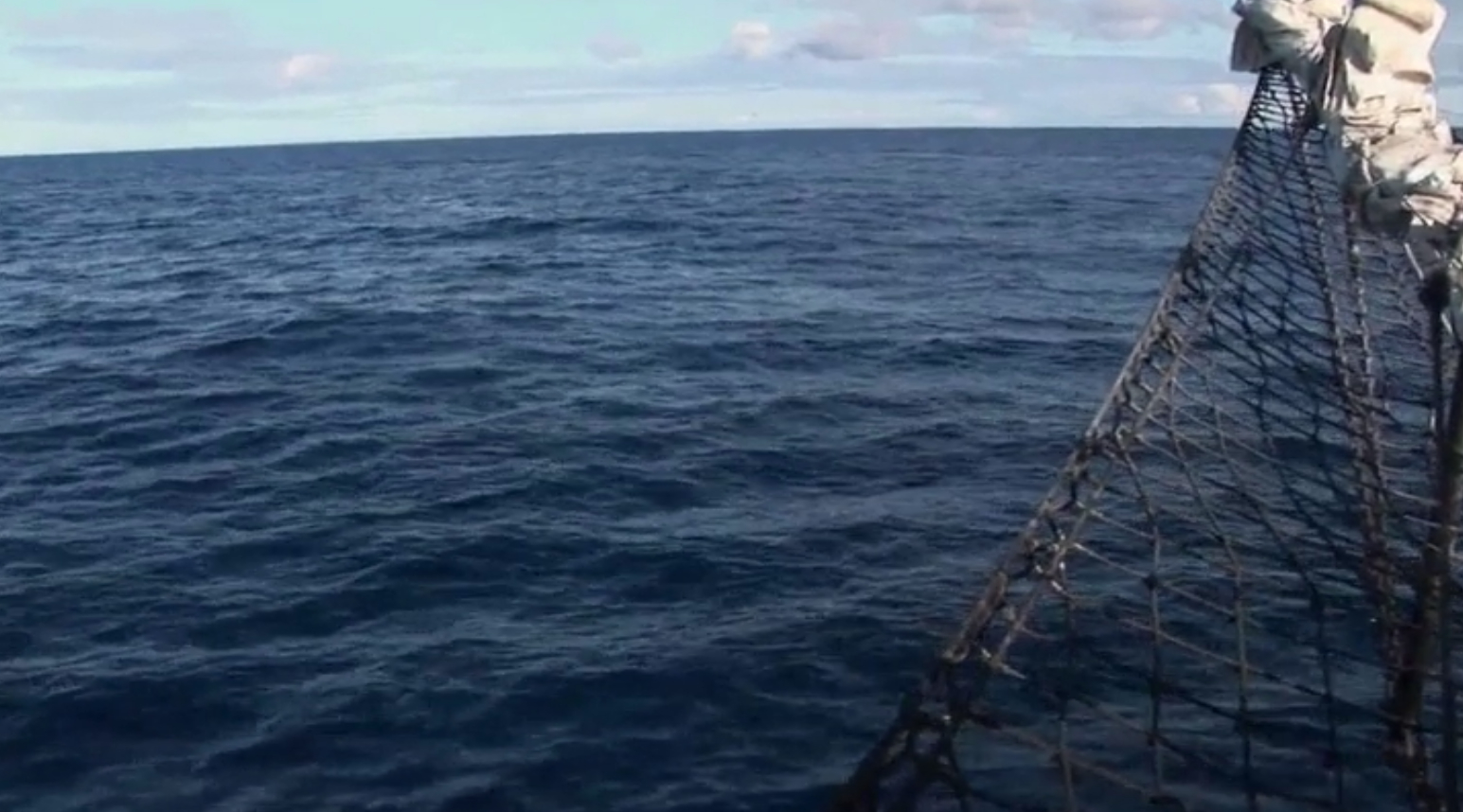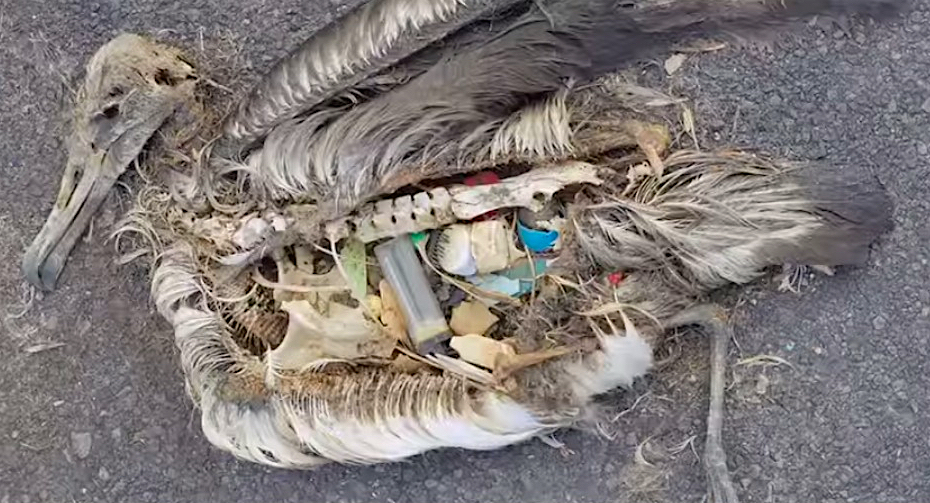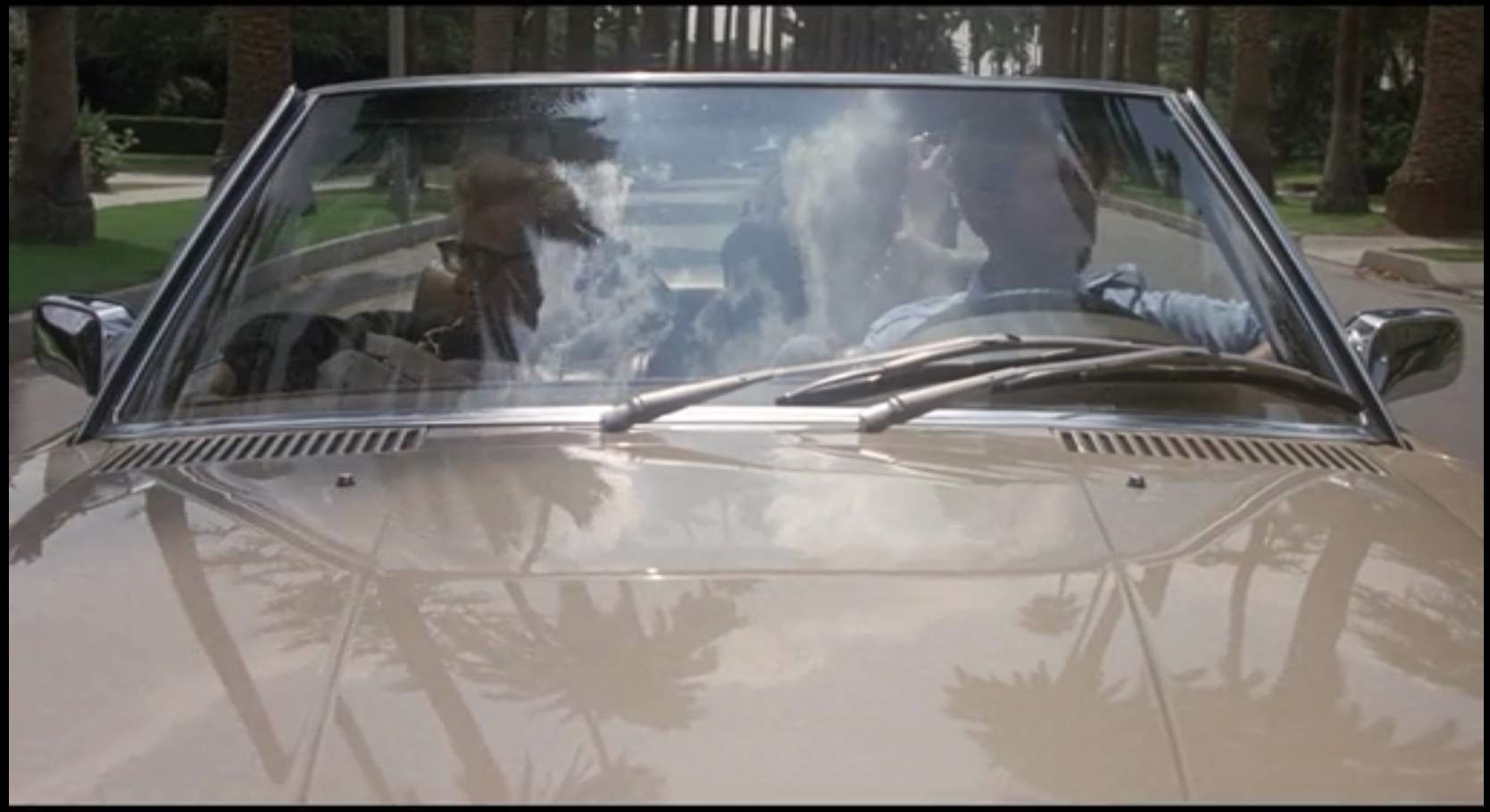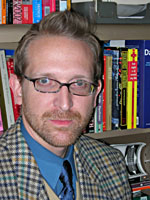NANO Special Issue Introduction: The Aesthetics of Trash
by David Banash and John DeGregorio
published June 2015
“Happiness thus puts us into intimate contact with things.” –Sara Ahmed (31)
In contemporary consumer cultures, it is an affective orientation towards objects that pulls consumers into the future. As Lauren Berlant writes, “[w]hen we talk about an object of desire, we are really talking about a cluster of promises we want someone or something to make possible for us” (23). Through objects, we pursue the promises of an ever-elusive happiness. Theorists like Ahmed and Berlant focus largely on the fantasy objects of the good life—the family, the lover, the child, the job, but also on all those objects that are better described as stuff: a house, a new car, an appliance, a shirt, a pair of shoes, a gun, a toy, a phone, a bottle of water—that whole object world that we assemble into a lifestyle. Those concrete objects, and their inevitable fates as trash, are under scrutiny in this special issue of NANO. In this issue we will ask, what happens when those concrete objects that promised us a future are suddenly found to be empty in our present? What happens when objects that promised us a future are cast away and forgotten as we reach towards some new, seemingly better promise?
The problem, of course, is that these failed, empty objects do not disappear. More and more fabricated from plastics, the objects of our everyday desires persist eternally. They are essentially immortal, and like zombies, have a way of leaving their graves and coming back to haunt us. There is a terrifying dimension to this that seems to put us in touch with the death-drive at the heart of capitalism, in which consumers are enjoined to the endless repetition of buying objects that can never produce the wholeness they promise. Once the newly bought objects are found empty, the cycle continues. Vance Packard offers one of the best descriptions ever written about the emergence of consumer culture, The Waste Makers. Writing in 1960, he imagines what sounds like Wal-Mart: “a Titanic push-button supermart built to simulate a fairyland” that includes “receptacles where the people can dispose of the old-fashioned products they bought on a previous trip” (5).
For the consumers of the global North, the great hope seems to be recycling. But thus far, recycling is doing almost nothing. While public relations campaigns are relentless, the sheer amount of plastics being produced overwhelm any attempt to systematically capture and reuse them. In 2012, the US alone produced 32 million tons of plastic waste, and only 9% of that was recycled (EPA). Tanya Leal Soto’s recent documentary, Plastic Paradise: The Great Pacific Garbage Patch, makes the fantasies of recycling clear as fantasies. In the middle of the ocean, the Great Pacific Garbage Patch is a swirling vortex of ineradicable plastic. But it is all but impossible to see the Great Pacific Garbage Patch. Go there on a boat, and it looks like blue seas as far as the eye can see. One has to cut open the guts of marine birds to understand the scale, and that simply doesn’t make for good television.


Turning on the TV today, one is presented with an infinite spectacle of objects: Antiques Roadshow, American Pickers, Pawn Stars, and of course all the shows about hoarders. These shows present the obverse of the advertisements where objects promise us a future, for in these shows about trash, people seem to be all but drowning under ever growing mountains of leftovers, surfing a sea of numberless objects, their packaging, and all the excesses of consumer culture that haunt our imaginations. This should be a bewildering spectacle, and yet somehow it is watchable, comprehensible, and perhaps there is even some dull comfort in these almost infinite but abject accumulations. The unthinking, stubborn passivity of the object reflects back to us the feeling that at least we are not that. These old, empty objects will try to sink us, but somehow they really make us swim, demonstrating our very human and yet almost incomprehensible productivity and drive. We might well grasp this as an ultimate kind of denial of all this excess as waste. It is like the old Woody Allen joke from Annie Hall. Driving around Hollywood, Annie comments that everything is so clean compared to New York. Alvie replies: “That's because they don't throw their garbage away. They turn it into television shows” (Allen).

Slavoj Žižek writes a pivotal critique of our dreams of recycling: “The idea of ‘recycling’ involves the utopia of a self-enclosed circle in which all waste, all useless remainder is sublated: nothing gets lost, all trash is reused” (35). For Žižek, the real ecologist would develop a mode of thought capable of “accepting waste as such...the inertia of rotten material that serves no purpose” (35). The problem of waste, as told in books from Packard’s The Waste Makers to Don DeLillo’s Underworld, is the perverse thrill inspired by the mountains of trash, overflowing in landfills, so easily turned into some image of use or beauty.
Perhaps the real problem is just this: look at how well all that waste works for us, ceasing to be waste at all as it labors to prop up our utopian fantasies of redemption. Waste as value is the fantasy at the heart of most popular culture which takes up these object worlds of trash, waste, and refuse. In shows like Antiques Roadshow, the fantasy is that what appears to be junk, some useless leftovers of the past, will almost always be revealed to hold a profound exchange value that will give it meaning, and each segment of the show ends with the sparkling price displayed underneath the seemingly ordinary object—now not waste at all but literally a glowing idea of exchange value.
From corporate propaganda to government public service announcements, the idea of recycling is that we can consume without being swamped in waste, as if it would only take separating the glass from the paper to make consumer capitalism sustainable. In Underworld, Don DeLillo writes:
My granddaughter is with me, Sunny, she is nearly six now, and inside the vast recycling shed we stand on a catwalk and watch the operations in progress. The tin, the paper, the plastics, the styrofoam. It all flies down the conveyor belts, four hundred tons a day, assembly lines of garbage, sorted, compressed and baled, transformed in the end to square-edged units, products again, wire-bound and smartly stacked and ready to be marketed. Sunny loves this place and so do the other kids who come with their parents or teachers to stand on the catwalks [...] the chunky product blocks, pristine, newsprint for newsprint, tin for tin, and we all feel better when we leave. (809-10)
DeLillo’s vision captures this fantasy of recycling, that somehow the equation of consumption could be perfectly balanced without the useless remainder. If television gives us the object redeemed by exchange value and recycling gives us the hope of an impossibly useful world, doesn’t art translate trash into beauty?
Artists from the dadaists to today’s conceptualists often work with trash. Massimiliano Gioni writes about collage, that fundamental technique of engaging with the leftover objects of consumption: “[c]ollage is a dirty medium, infected as it is by waste. It appropriates residues and leftovers, trafficking with what is deemed to be valueless” (11). But of course, all of that “valueless” waste will work for us again as sense and beauty, the impossible equation again perfectly balancing: “it was an attempt to make sense of the world, to structure it, while still preserving its absurdly cacophonic, at times, sublime multiplicity” (12). In collage, all the waste is redeemed in a sense, just as the photographs of Vik Muniz or Edward Burtynsky take the waste we cannot recycle but make it so impossibly beautiful that it is redeemed, doing the thing that beauty always does:
Beauty is, then, a compact, or contract between the beautiful being (a person or thing) and the perceiver. As the beautiful being confers on the perceiver the gift of life, so the perceiver confers on the beautiful being the gift of life. Each “welcomes” the other: each—to return to the word’s original meaning—“comes in accordance with [the] other’s will.” (Scarry 61)
How beautifully the equations balance with no unusable leftovers! Isn’t this exactly the disavowal suggested by Žižek’s concept of waste as an absolute uselessness that cannot be redeemed?
Can we learn to think waste as waste?
In “Trash as Trash as Art: Reflections on the Preservation and Destruction of Waste in Artistic Practice,” Stacy Boldrick reflects on her participation in artist Michael Landy’s 2012 Workshop on Destruction in order to reconceptualize the creative reuse of discarded objects in contemporary art practices. Boldrick discusses artistic acts of destruction that challenge the material conditions of discarded objects through several examples of art as trash, culminating in a poignant reflection on her creation of a self-destroying sculpture in Landy’s Workshop. In a fascinating survey of the re-use of trash in contemporary art, Boldrick explores the intentional destruction of trash; she writes, “[m]any artists incorporate destructive acts into their practice in order to address the ephemerality of the material world, but they also do it […] to retain a sense of the object’s original value and purpose.” Rejecting the popular celebration of art practices that incorporate or recycle waste in order to create something other than trash, Boldrick suggests that the acknowledgment of trash as itself, in its ephemerality and expendability, presents a more compelling alternative for the work of art.
Charmaine Eddy, in “Trash and Aesthetics in the Hoard,” deftly reads two reality television series, Hoarders and Hoarding: Buried Alive, in terms of the alternate semiologies of the object provided by “thing theory.” In these shows, hoarding is framed as a psychopathology that is cured by applying the evaluative measures of consumer capitalism to the hoarder’s objects, classifying them as trash. However, Eddy argues that the therapeutic narrative of both shows is undermined by a potentially disruptive discourse: uncontainable within the economic logic of the curative process, the many moments in which the camera focuses on the singular object in the hoarder’s hand give voice to an object-oriented ontology that threatens to “insert a wedge into the evaluative object hierarchy that subtends consumption.” Ultimately, Eddy concludes that “resisting homogenizing the differences of objects” and “disrupting moral definition[s] of consumption” may provide a basis for addressing “the larger social and environmental problems we now face as a result of the restrictive human-centered aesthetics in which objects have historically been placed.”
Co-authors Mél Hogan and Andrea Zeffiro, in “Out of Site & Out of Mind: Speculative Historiographies of Techno trash,” articulate a theoretical framework for a historiographic approach to what they term “techno trash,” the disuse and disposal of common tech devices, primarily phones, tablets, and laptops. The authors argue that capitalist markets encourage the built-in obsolescence of new gadgets, resulting in a corresponding ecological impact that is largely concentrated in developing nations. Designed to be trashed, new tech devices are produced, consumed, and discarded at an alarming rate, necessitating an open, non-commercial space for tech users to document and reflect on their experiences with techno-trash. Hogan and Zeffiro operate just such a space, their participatory project technotrash.org, which they describe as “a repository for narrative reflection and photo documentation, detailing modes of acquisition, patterns of use, and the limitations of options when dealing with technological disposal.” The authors suggest that their communal project enables participants to tell their techno-trash stories, which thus “operates as a framework for making sense out of the world” and functions as “a strategy for transforming private into public meanings.”
In “Notes on Cool: The Temporal Politics of Friendly Monsters and the E-waste Aesthetic,” Sabine LeBel examines what she terms the “E-waste aesthetic,” primarily an aesthetics of scale, as it is invoked in the sculpture WEEE and the film WALL-E. LeBel argues that both sculpture and film address E-waste as a crisis of space, representing the sheer enormity and volume of tech garbage, while ignoring the temporal implications of such devastating waste. For LeBel, built-in obsolescence, environmental toxicity, and the redistribution of hazardous waste from rich to poor countries are long-term problems insufficiently addressed by current approaches to E-waste management. Extending from her exploration of the E-waste aesthetic and her critique of spatial approaches to digital-age waste, LeBel suggests that WEEE and WALL-E reproduce an affectless, individualist, consumerist aesthetic of the “cool” that has emerged online, but “can be connected not only to the culture of information, but also to the corporatization of culture.”
Multi-media artist and writer Emit Snake-Beings, in “Trash Aesthetics and the Sublime: Strategies for Visualizing the Unrepresentable within a Landscape of Refuse,” suggests that visual art engaging in what he terms a “trash aesthetic” can exceed human-dominated systems of representation in order to acknowledge the possibility for non-human structures of meaning. Snake-Beings argues that such an aesthetic decenters the human while it foregrounds the ontology of the material, trash object itself. When obsolete technology is trashed or formerly intelligible structures are abandoned, those objects drop out of our consciousness and into our landfills, becoming sublime in the process—as the trash object no longer functions within our habitual frameworks for making sense of the world. Snake-Beings’s personal photographs of vacant billboards, emptied of advertisements in the wake of the 2008 global economic crisis, are compelling evidence for this unintentionally activated sense of the sublime, which he suggests can be understood as a highly political moment: “[t]he in-situ blank billboard can be read as an emergence of visible trash within the language of consumerism. While not directly connected to the human intention of creating a message, it is possible to read these signs as politicized artworks created by complex economic and industrial processes.”
In “Drawing a Transductive Ecosophy in Process: Technological Arts, Residual Matter, Associated Milieus,” artist Gisèle Trudel explicates a tetralogy of performative artworks on waste matter produced by Ælab, an art research unit co-founded by Trudel and collaborator Stéphane Claude. Working from a Deleuzian framework, Trudel discusses the ways in which the title of her text functions as a diagram, topologizing the processes of the tetralogical artworks in relation to their materiality, philosophy, and technicity. Trudel rethinks the role of the human in ecology through the concept of ecosophy, interweaving mental, social, and environmental ecologies, which she describes as “a theory of the relations of subjectivity to a situation and to life, [which] proves fruitful and relevant for political change,” in which “the individual is not isolated from the changes and crises that s/he also takes part in.” Trudel’s unique combination of academic research and artistic creation instantiates a transdisciplinary aesthetic, emerging from an ecology of practices that brings together humans, non-humans, and residual matter in order to increase mindfulness of their mutual implication in ecological processes.
Thinking about waste without the comforting fictions of perfect recycling is more important than ever as global consumerism grows ever larger. As the contributors to this issue demonstrate, artists, writers, activists and academics are trying to find new, inventive, and compelling frames to challenge us to acknowledge waste.
Works Cited
Ahmed, Sara. “Happy Objects.” The Affect Theory Reader. Eds. Melissa Gregg and Gregory J. Seigworth. Durham: Duke UP, 2010. 29-51. Print.
Allen, Woody, dir. Annie Hall. United Artists. 1977. Film.
Berlant, Lauren. Cruel Optimism. Durham: Duke UP, 2011. Print.
DeLillo, Don. Underworld. New York: Scribner, 1998. Print.
E.P.A. “Plastics.” Environmental Protection Agency. 14 Feb. 2014. Web. 23 May 2015.
Packard, Vance. The Waste Makers. New York: David McKay, 1960. Print.
Scarry, Elaine. On Beauty and Being Just. Princeton: Princeton UP, 2001. Print.
Soto, Tanya Leal, dir. Plastic Paradise: The Great Pacific Garbage Patch. Sunshine. 2013. Film.
Žižek, Slavoj. Living in the End of Times. London: Verso. 2011. Print.


